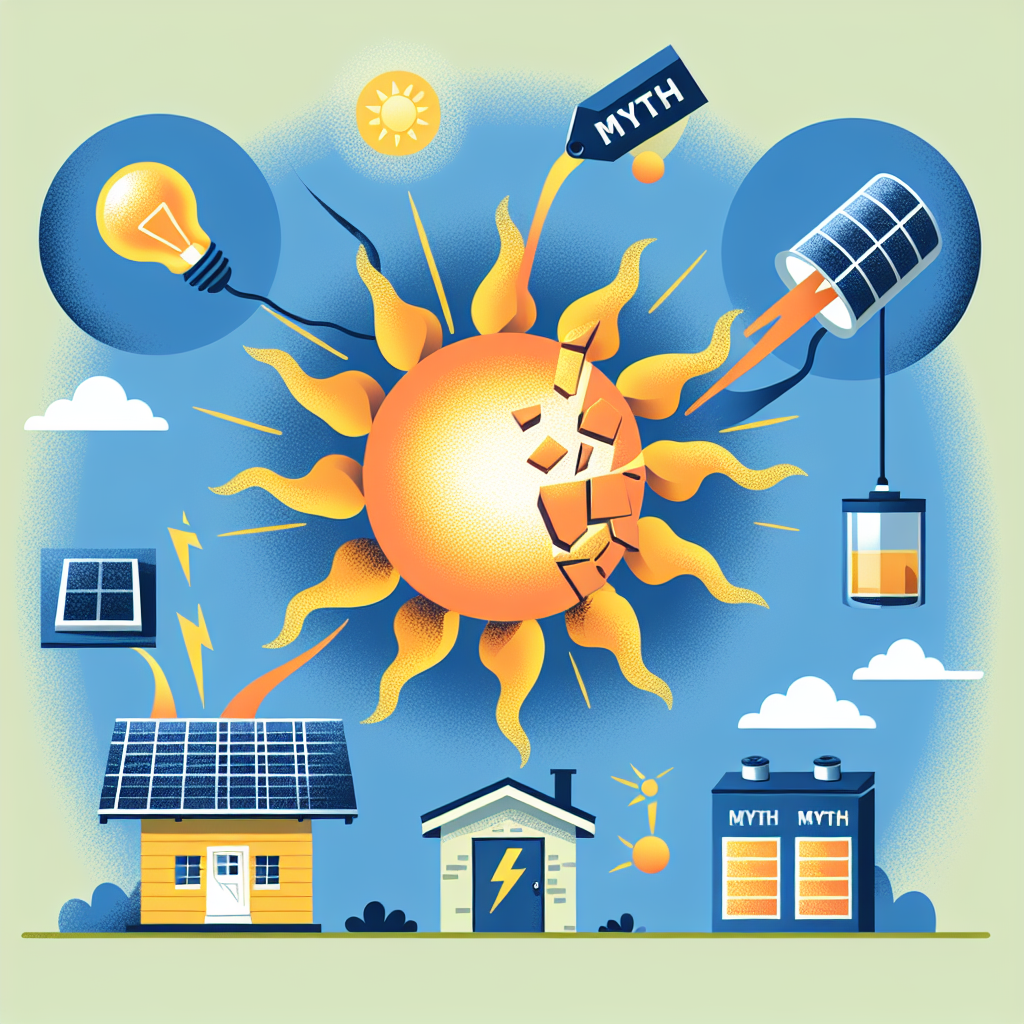As the world shifts its focus towards renewable energy sources, solar energy has emerged as a leading contender for sustainable power generation. However, with its rising popularity come numerous myths and misconceptions that deter people from embracing this clean energy source. In this article, we’ll debunk ten common myths about solar energy, providing clarity and encouraging more informed decisions about this remarkable technology.
Myth 1: Solar Energy is Too Expensive
One of the most prevalent misconceptions about solar energy is that it is prohibitively expensive. While the initial investment may seem high, the costs of solar panels have plummeted over the last decade. Additionally, government incentives, tax credits, and financing options have made it more accessible than ever. When you consider the long-term savings on electricity bills, solar energy can be a financially savvy choice for many households.
Myth 2: Solar Panels Don’t Work in Cloudy Weather
Many believe that solar panels only function under bright, sunny conditions. While sunlight is indeed essential, solar panels can still generate electricity on cloudy days. They utilize diffuse light, which can penetrate the clouds. In fact, many regions with less sunshine have successfully adopted solar energy, proving its viability in various climates.
Myth 3: Solar Energy Requires Too Much Space
Another myth is that solar energy systems require a vast amount of space. While larger installations do require more land, many residential rooftops provide sufficient space for solar panels. Additionally, innovative solutions such as solar shingles and building-integrated photovoltaics (BIPV) are allowing homeowners to harness solar energy without sacrificing aesthetics or space.
Myth 4: Solar Panels Are Only for the Wealthy
It’s a common belief that only affluent households can afford solar panels. However, this is far from true. Many solar companies offer financing options that include leasing and power purchase agreements (PPAs), making it possible for homeowners of all income levels to go solar. Community solar farms are also emerging, enabling people to invest in solar energy collectively, regardless of their financial status.
Myth 5: Solar Energy is Inefficient
Some people are concerned that solar energy is not an efficient power solution. Recent advancements in technology have significantly improved the efficiency of solar panels. Many panels now convert more than 20% of sunlight into usable electricity, and ongoing research continues to push that number higher. This makes solar energy a viable option for generating renewable power.
Myth 6: Solar Panels Require Constant Maintenance
While it’s true that solar panels require some maintenance, the truth is quite manageable. Most solar installations require minimal upkeep, such as regular cleaning and an occasional inspection. By following simple maintenance practices and keeping trees trimmed to avoid shading, homeowners can ensure their systems operate at peak efficiency with minimal hassle.
Myth 7: Solar Energy Has a Negative Impact on the Environment
An alarming myth is that solar energy harms the environment more than it helps it. While the manufacturing process of solar panels has environmental impacts, the amount of carbon emissions saved during their use far outweighs these effects. Moreover, the solar industry is increasingly focused on sustainability, including the development of recyclable materials and greener manufacturing processes.
Myth 8: You Need to Be Off the Grid to Use Solar Energy
Some assume that solar energy is only for off-grid homes. However, solar energy can effectively supplement grid-connected homes. Many systems allow homeowners to sell excess energy back to the grid, creating a more robust and resilient energy system. This grid-tied approach can reduce reliance on non-renewable energy sources while still benefiting from the stability of the grid.
Myth 9: Solar Energy is Only for Homeowners
Many believe that only homeowners can benefit from solar energy, but that’s simply not true. Businesses, schools, and even non-profit organizations can take advantage of solar energy to reduce operational costs and promote sustainability. Community solar projects enable renters and those without suitable rooftops to invest in solar energy, broadening access to this valuable resource.
Myth 10: Solar Energy is a Fad That Will Disappear
With the growing emphasis on combating climate change and transitioning to renewable energy, some skeptics question the longevity of solar energy. However, solar power is not a passing trend; it’s an essential part of the global energy landscape. Governments and private sectors are increasingly investing in solar technology, indicating its importance for a sustainable future.
Conclusion: Embrace the Truth about Solar Energy
As we have explored, many myths about solar energy can discourage individuals and businesses from embracing this invaluable resource. By debunking these misconceptions, it becomes clear that solar energy is a viable, efficient, and friendly option for generating power. With substantial financial incentives, technological advances, and a commitment to sustainability, the future of solar energy is bright. Educating ourselves and others about the realities of solar energy can pave the way for a cleaner, greener planet. So let’s harness the sun and make a positive impact for generations to come!


